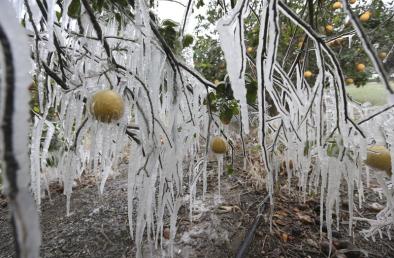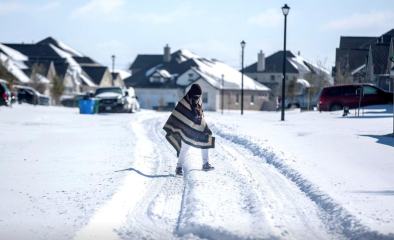Warm Arctic, Cold Continents: A Common Pattern Related to Arctic Sea Ice Melt, Snow Advance, and Extreme Winter Weather
Study key findings & significance
- Sea ice loss has contributed to moistening of the Arctic, which has resulted in more extensive snow cover in the fall that in turn forced a dynamical response in the atmosphere favorable to a negative winter Arctic Oscillation (AO).
- A statistical model using snow cover as its main predictor accurately forecasted below normal temperatures across northern Eurasia and the United States during winter 2013.
- Furthermore, the large melt of Arctic sea ice in summer/fall 2012, the rapid advance of snow cover across Eurasia in October 2012, and the predominantly negative AO phase during winter 2012/2013 may all be associated with severe winter weather across the northern continents.
- Low sea ice, extensive snow cover, and a negative winter AO share the warm Arctic/ cold continents pattern and are linked with increased atmospheric blocking and extreme winter weather across the Northern Hemisphere
Abstract
Arctic sea ice was observed to be at a new record minimum in September 2012. Following this summer minimum, northern Eurasia and much of North America experienced severe winter weather during the winter of 2012/2013. A statistical model that used Eurasian snow cover as its main predictor successfully forecast the observed cold winter temperatures. We propose that the large melting of Arctic sea ice may be related to the rapid advance of snow cover, similar to the connection made in studies of past climates between low Arctic sea ice and enhanced continental snowfalls and glacial inception via ice sheet growth. Regressions between autumnal sea ice extent and Eurasian snow cover extent and Northern Hemisphere temperatures yield the characteristic "warm Arctic/cold continents" pattern. This pattern was observed during winter 2012/2013, and it is common among years with observed low autumn sea ice, rapid autumn snow cover advance, and a negative winter Arctic Oscillation. Dynamical models fail to capture this pattern, instead showing maximum warming over the Arctic Ocean and widespread winter warming over the adjacent continents. We suggest that the simulated widespread warming may be due to incorrect sea ice-atmosphere coupling, including an incorrect triggering of positive feedback between low sea ice and atmospheric convection, resulting in significant model errors that are evident in seasonal predictions and that potentially impact future climate change projections.
Related Content




